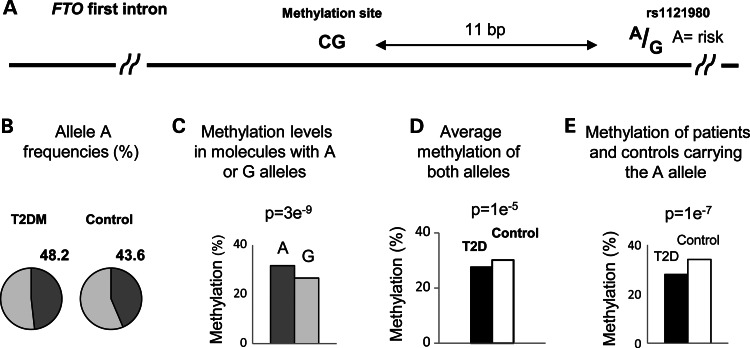Figure 3.
Sequence-independent differential methylation. (A) Map of a DNA fragment from the first intron of the FTO gene, containing a CpG site and a T2DM/obesity-associated polymorphic site. (B–E) The results of ultra-deep sequencing of this fragment among two case and two control pools, allowing co-assessment of genotype and epigenotype differences. (B) Frequencies of the A allele among case and controls pools. (C) Methylation levels of sequenced DNA molecules carrying the A or the G alleles. The P-value of the difference between the case and control pools is indicated. (D) Methylation levels of case and control pools (both alleles). (E) Methylation levels of molecules from the case or the control pools carrying the A allele. The data show that despite the higher frequency of the A risk allele among the cases (B), and the higher methylation level associated with the risk allele (C), cases are more methylated than controls (D), and this trend persists among DNA molecules carrying the A allele (E). Thus, the hypomethylation of the patients is sequence-independent.

